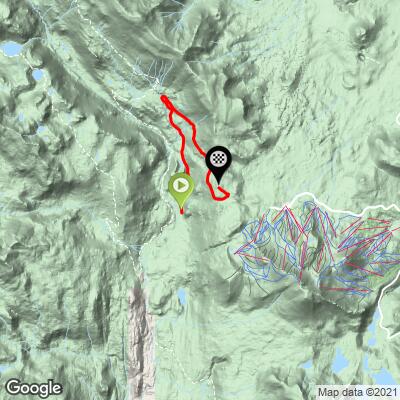![]()
Cycling Minaret Summit West
Ride 5.4 miles gaining 1,529’ to elevation 9,232 at 5.4% average grade.
![]()
Minaret Vista at the climb’s finish.
In the photo above you see the jagged peaks that inspired the name Minaret for the viewpoint also seen in the photo.
The peaks were named in 1868 by the California Geographical Survey, which reported: "To the south of Mount Ritter are some grand pinnacles of granite, very lofty and apparently inaccessible, to which we gave the name of 'the Minarets” Wikipedia.
![]()
The Minarets.
![]()
View west of the Minarets near the top of the climb.
![]()
Same location as the photo above.
The Minarets are located in the Ritter Range which is a sub-range of the Sierra Nevada Mountains. The area is more popular for winter sports at Mammoth Mountain Ski Area, but cycling is also a worthy alternative as well as a trip to Devils Postpile National Monument, located 1½ miles west of the start of this bike climb.
![]()
Pass by Mammoth on our way to the start of the Minaret West climb.
![]()
Very narrow road.
![]()
1½ miles west of the start of the Minaret West climb.
![]()
![]()
One point of interest located on this climb is Devils Postpile National Monument. This landmark was “established in 1911 by presidential proclamation, Devils Postpile National Monument protects and preserves the Devils Postpile formation, the 101-foot high Rainbow Falls, and pristine mountain scenery. The formation is a rare sight in the geologic world and ranks as one of the world's finest examples of columnar basalt. Its columns tower 60 feet high and display an unusual symmetry” NPS Devils Postpile. A lot of the geologic origins of the postpile are still unknown, and until recently this landmark was thought to be millions of years old. Now, scientists believe it was formed less than 100,000 years ago by cooling lava rock that cracked into the multi-sided columns we see today. More information on this unique and mysterious geologic occurrence can be found on the NPS website, here.
![]()
That’s a wrap!

 We've partnered with Sherpa-Map.com to bring you the best route planning tool. With a PRO Membership you can use this climb as a reference when creating your route.
We've partnered with Sherpa-Map.com to bring you the best route planning tool. With a PRO Membership you can use this climb as a reference when creating your route. 

